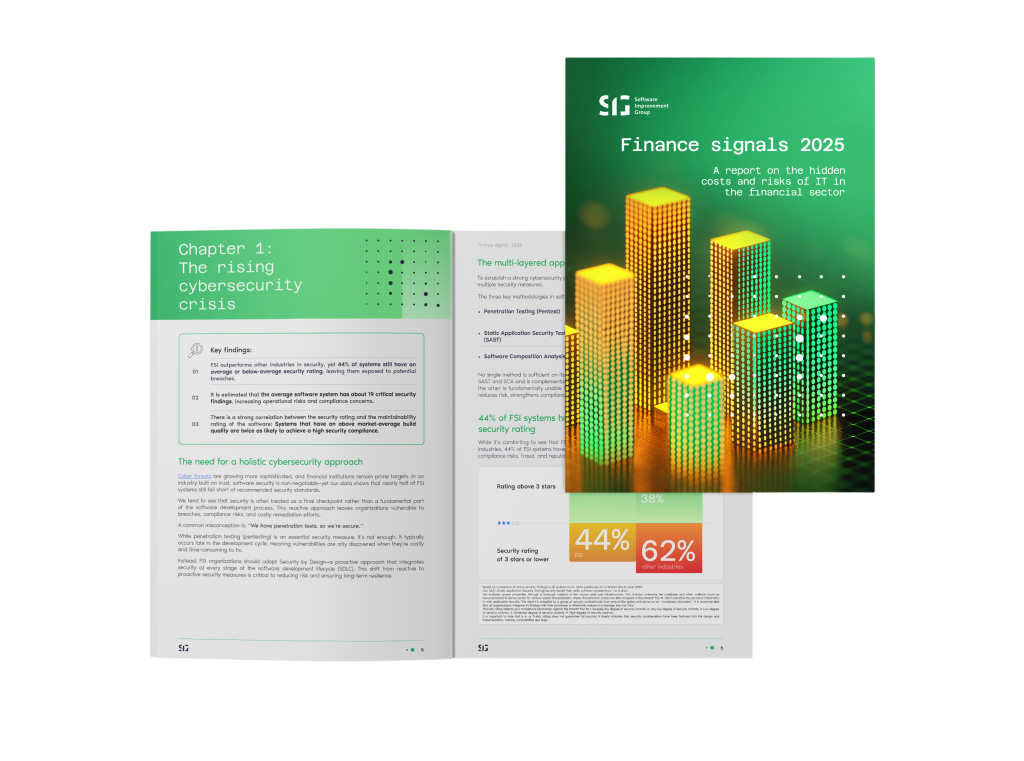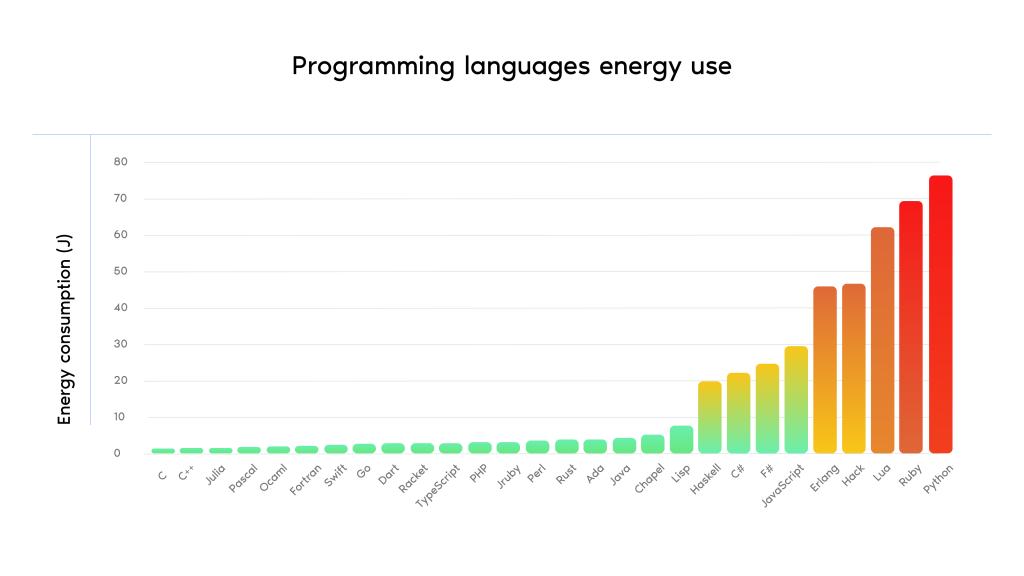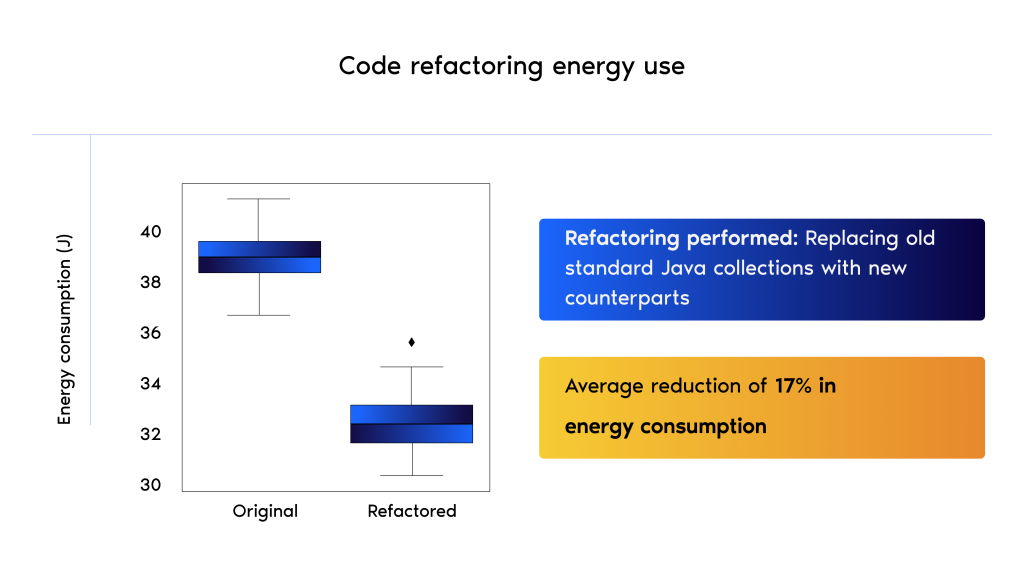Green IT in FSIs: Why sustainable software is a business advantage
Summary
Our finance signals 2025 report uncovers the hidden impact of software quality on sustainability efforts in financial services. While many often associate IT emissions with hardware, software itself is a growing contributor and an overlooked opportunity for improvement.
We found that code refactoring can reduce energy consumption by an average of 17%, and in some cases, algorithmic optimizations cut energy use by up to 90%. Yet 35% of financial institutions remain off-track to reach net zero by 2050, with emissions still rising.
Languages matter too: Python, one of the most commonly used languages in finance, is also among the most energy-intensive, making sustainable engineering practices more important than ever.
Read the full report to see how FSIs can align digital operations with climate goals (without compromising performance).

Introduction
Just last November, the World Meteorological Organization issued another Red Alert in its State of the Climate 2024 report, highlighting just how rapidly climate change is accelerating within a single generation, driven largely by rising greenhouse gas emissions.
This has placed financial institutions under increasing pressure from regulators, investors, and the public to be more transparent about their climate impact and to take more responsibility for reducing it.
Many banks and insurers are stepping up, but digital transformation is making things more complex. As more services and systems move online, IT infrastructure grows—driving up energy use and emissions in the background.
And the numbers paint a worrying picture:
- 35% of financial institutions are off-track to reach net zero by 2050, with emissions still rising.
- 80% of IT hardware emissions come from manufacturing, not usage.
- Only 50% of banks and 22% of insurers have adopted sustainable IT hardware practices like reusing and recycling equipment.
While ESG reporting and sustainable finance get most of the attention, the carbon footprint of IT operations is often overlooked, despite being a major piece of the puzzle.
Why green IT is needed
So how can financial institutions reduce their environmental footprint while meeting growing expectations from regulators and stakeholders? This is where Green IT comes into play.
And it’s not just about adopting low-energy hardware or greener cloud providers. Green IT means rethinking how technology is used, from consumption habits and procurement decisions to how systems are built and maintained.
It requires embedding sustainability into every layer of IT operations, backed by clear measurement, continuous optimization, and a long-term plan. Real progress doesn’t happen by accident. It calls for strategic direction, leadership commitment, and sustainable software design from the ground up.
But what exactly is green IT?
Also known as green computing or sustainable IT, Green IT is about reducing the environmental impact of technology. While hardware and infrastructure often get the spotlight (understandably, given their carbon footprint), software has a major role to play too.
As Software Improvement Group’s CEO, Luc Brandts puts it: “When you want to do things on sustainability in software, it is really about looking at the code.”
In other words, making software more sustainable starts with how efficiently it’s written.
Inefficient code, poor system architecture, and energy-intensive coding practices (like unnecessary loops or overcomplicated logic) can all increase the energy it takes to run and maintain software. Over time, these inefficiencies add up, consuming more resources, generating more emissions, and making systems harder to adapt or scale.
The power of green software engineering
Green software engineering isn’t just about reducing environmental impact, it can also improve performance, cut costs, and support compliance. Here’s how:
- Reduce emissions: The core goal is to cut greenhouse gas emissions by making software more energy efficient.
- Lower costs: Efficient software uses fewer computing resources, helping reduce hosting and cloud costs.
- Faster software: Optimized workloads improve performance, reduce latency, and create a smoother user experience.
- Greater scalability: Software that scales to match demand is more efficient and better prepared for future growth.
- Easier compliance: Sustainable software practices make it easier to meet ESG reporting requirements like IFRS and CSRD.
Optimizing financial software for sustainability
At Software Improvement Group (SIG), we’ve been studying IT sustainability since 2014, and our research shows a clear connection between software quality and energy efficiency.
Programming languages influence energy use
The technologies you choose matter. Some programming languages consume more energy than others, so sustainability should be considered alongside performance and scalability when selecting tools.

That said, rewriting entire systems just to switch languages isn’t always practical. It requires a thoughtful cost-benefit analysis.
Interestingly, the most energy-intensive technologies are still among the top five most used in our dataset:

Python, in particular, is one of the most commonly used languages, and one of the most energy-intensive.
Simple code refactoring can slash energy use to up to 90%
You don’t need a full rewrite to reduce your carbon footprint. In fact, simple code refactoring can reduce energy consumption by an average of 17%. In more extreme cases, algorithmic improvements have achieved energy reductions of up to 90%.

The bottom line
Green IT is becoming essential for financial institutions. By optimizing both software and hardware, financial institutions can lower emissions, cut costs, and meet growing expectations from regulators, clients, and society. As IT continues to scale, sustainability needs to be part of the foundation, not just an afterthought.
For more practical guidance, read SIG’s complete guide to green computing. It covers everything from development practices to procurement strategies that support long-term sustainability.
For more FSI insights, check out our latest report, finance signals 2025, packed with exclusive benchmark data and 25 years of expertise optimizing financial IT. It’s a must-read for CIOs, CTOs, and technology leaders aiming to make confident, strategic decisions in a rapidly evolving environment.



